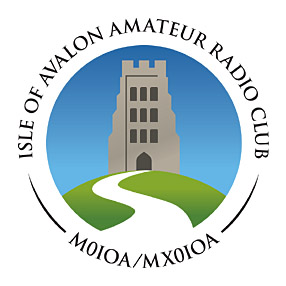PMR446 coverage experimentation
This is a follow-on to yesterday’s Friday Night Net experiments
I have three PMR446 rigs, a Retevis RT24 and a Floureon bright orange rig from Amazon and a 15-year old Icom PMR446S. There are all sorts of wild claims made for the range of PMR446 rigs, but I have not often seem them realised. These rigs work at UHF, just above the 70cm amateur radio band. I tested the Icom and the Floureon against the RT24m using PMR channel 4 no CTCSS. I chose to use the Somerset levels, with the receiver in an elevated area about 25m ASL near the cemetery, as a reasonable urban example with a clear takeoff, though there are some trees.

Blue icons are shown where readability was 4 or better with the Floureon, which was the better rig of the two1.
PMR446 is not great for DX, but it was never designed to be
The range results were in keeping with my practical experience of PMR446. 500m is probably a good rule of thumb in the open air, which is a good fit for keeping a family groups in touch in the outdoors that PMR446 is designed for. PMR446 is great on a campsite or for a family going on a hike, indeed the US variant on a slightly different UHF frequency is aptly called family radio service - PMR446 lets the kids wander a little bit further form the adults but keep in touch. The urban limitations aren’t so much an issue, because you may as well use your phone in cities ;) PMR446 scores in the outdoors because they are point to point, not needing the mobile phone infrastructure. They can get a longer range, I have included the data point from last night’s net which was received by the RT24 at a distance of 1 mile. Height is everything, but Wikipedia seems to be roughly right when they say
Most of the time the maximum range that a user in a city can expect is a few hundred metres or less.
A practical tip I learned is at the edge of range, don’t walk with these things, the flutter goes from readable to unreadable in a short distance, a quarter wavelength is 17cm so moving through this distance can be the difference between being in a null or not.
You can occasionally do a lot better - on 23 Sept M7AJO made contact with a French station using PMR466 from the Blackdown Hills area
-
Perhaps the Icom has drifted low in frequency, although these are synthesised rigs the PLL reference crystal ages over time, I have had the experience of having to line up the crystals in old rigs before, sometimes having to lower the trim padding capacitance, because crystals typically drop in frequency over time. However, it’s not really worth it for a PMR446 rig because these are cheap, and the Icom is only an 8-channel set, Ofcom expanded the frequency range of PMR446 to 16 channels a few years back. ↩
